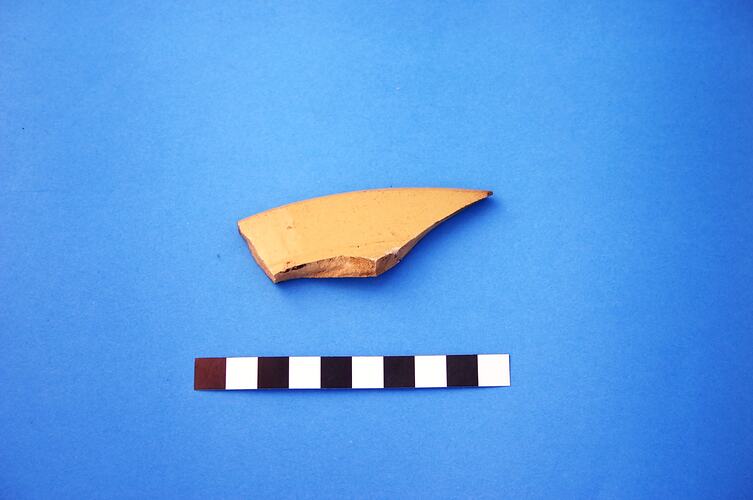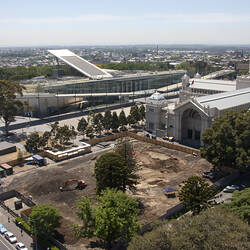Summary
This type of ware was first produced in England around the 1830s and then the USA by the 1840s. The peak of production was the 1860s-1870s and popularity declined at the turn of the century.
Physical Description
One rim fragment of a large unidentified earthenware item, probably a basin. Body and glaze are buff yellow. Probable manufacture period is circa 1830 to circa 1940.
Physical Description
One rim fragment of a large unidentified earthenware item, probably a basin. Body and glaze are buff yellow. Probable manufacture period is circa 1830 to circa 1940.
More Information
-
Collection Names
-
Collecting Areas
Public Life & Institutions, Historical Archaeology, Royal Exhibition Building
-
Acquisition Information
Transfer from Godden Mackay Logan Heritage Consultants (GML), Department of Archaeology, La Trobe University, Australia Gallery, History & Technology Department, Museum Victoria, 20 Nov 2009
-
Manufacture Date
-
Context Number
G11/4/8/001
-
Site
Australia, Victoria, Melbourne, Royal Exhibition Building Western Forecourt
-
Activity
-
Specific Activity
-
Decoration
-
Colour
Yellow
-
Classification
-
Category
-
Discipline
-
Type of item
-
References
Joy 1989: C-5; Poplar Forest 1996: 23; Miller et al 2000: 12
[Article] Joy, D. 1989. Appendix C: Diagnostic Cultural Materials, Ceramics., 1989, 5 Pages
[Book] 1996. Poplar Forest Archaeology Lab and Field Manual., 1996, 23 Pages
[Article - Journal] Miller, George L., et al. Telling Time for Archaeologists. Newsletter of the Council for Northeast Historical Archaeology. 29: 1-22., 2000, 12 Pages
-
Keywords

